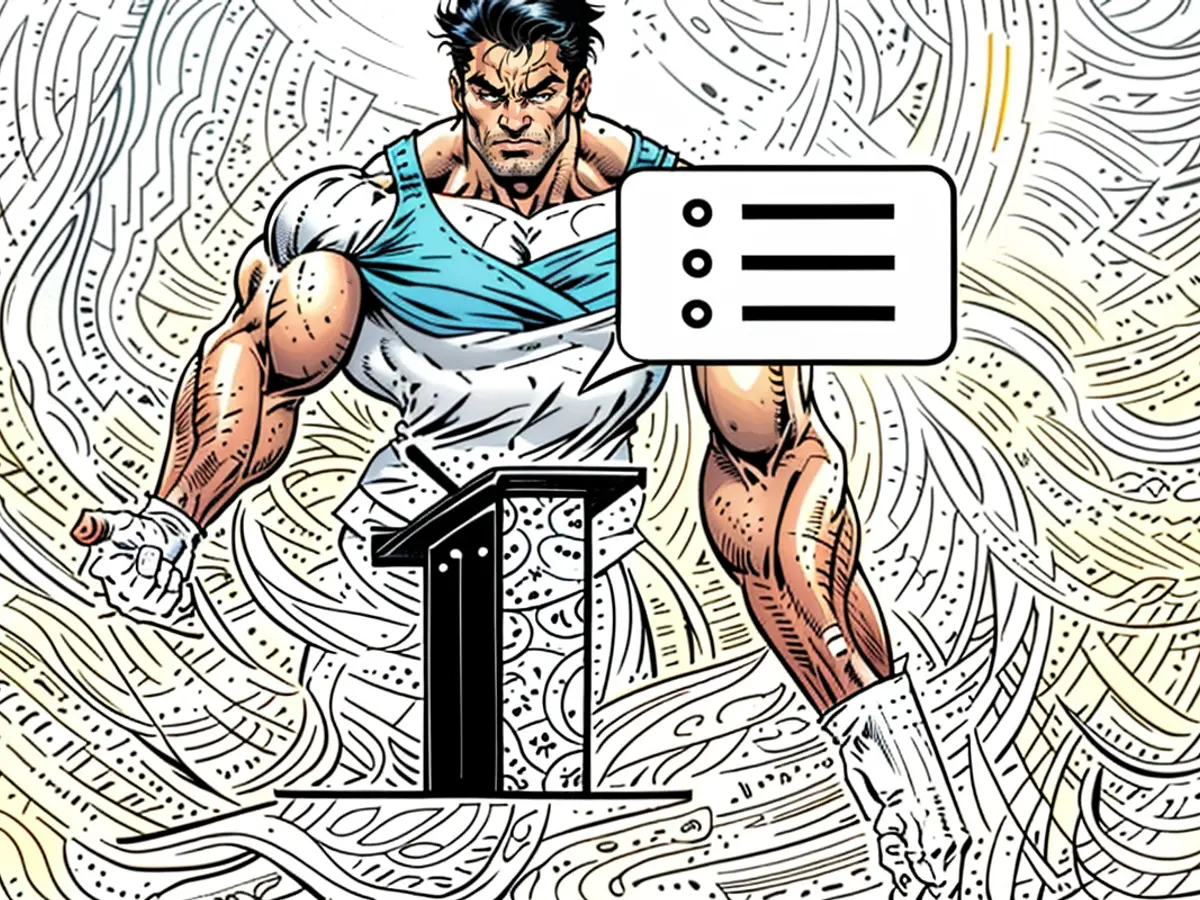How the Harris 2024 shake-up could affect House and Senate races
It could also have a major impact on House and Senate races. Both chambers of Congress are narrowly divided at the moment; Republicans hold a slim advantage in the House and Democrats narrowly control the Senate. Either chamber could go either way in November.
I went to Simone Pathe, a senior Washington editor for CNN Politics and the author of an occasional series, “The 10 Senate seats most likely to flip.” Read the most recent version here.
We talked by email about the state of play for the House and Senate and how the shake-up in the presidential race might change things.
Does Harris change the Senate equation?
WOLF: The presidential race got a total reset when President Biden dropped out. Does that reset anything in the battle for the Senate?
PATHE: The extent to which the change at the top of the ticket shifts Senate races will be one of the most interesting things to watch over the coming months.
Remember that a big part of the pressure on Biden to step aside was the warning from Democratic lawmakers about his drag on down-ballot races. So now the big question is whether the Democratic brand itself is toxic or whether that was a particular vulnerability attached to Biden.
It’s still early days of this new political reality, but there are some early signals of how Harris as the nominee could be giving Democratic incumbents a sense of relief.
For starters, the new CNN poll released Wednesday shows Harris doing better against former President DonaldTrump than Biden did with some key demographic groups — young voters, female voters and Black voters. (The topline showed no clear leader between Harris and Trump, but that in itself could be good news for Democrats given that the margin-of-error finding was closer than some earlier CNN polling of the Biden-Trump matchup.)
You can also look at candidates’ behavior.
Wisconsin Sen. Tammy Baldwin, who’s running for reelection in a key battleground, didn’t attend Biden’s first post-debate rally in Madison. But she was very publicly with Harris on Tuesday — greeting her as she boarded Air Force Two and delivering remarks at her rally in Milwaukee.
I was covering Baldwin in Wisconsin in the days before Biden announced he was dropping out of the race, and she was clearly in a bind. Unlike some of her fellow vulnerable colleagues, Baldwin had not called for Biden to step aside, but reiterated that she’d heard concerns from her constituents. After Biden exited, she quickly endorsed Harris and called Biden’s decision “an incredible act of patriotism.”
Not everyone has publicly endorsed Harris, though — and that’s telling too.
Sen. Jon Tester, the most vulnerable incumbent up for reelection, has not. He’s running in a very different state from Baldwin. (Wisconsin is No. 8 on CNN’s list of seats most likely to flip, whereas Montana is No. 2.)
Given Trump’s strength in Montana, Tester was always going to have a tough race regardless of who the party nominates for president, and it’s not necessarily clear that the voter groups among whom Harris is doing better than Biden will help Democrats all that much in a conservative state like Montana, where she’ll be tarred as a California liberal.
The Senate GOP campaign arm put out a memo this week in which it acknowledged that attacks on Biden’s mental fitness didn’t necessarily translate to down-ballot races. For that reason, the NRSC (National Republican Senatorial Committee) argued, Harris may be a bigger drag on Senate Democrats because they can paint her policies as extreme. (Calling her a “border czar,” which, as our colleague Priscilla Alvarez noted, hasn’t actually been her role, fits right into the biggest themes of GOP attack ads — the border and immigration.)
Even in a more evenly divided state like Pennsylvania, the GOP Senate nominee is already digging up 2019 footage of Harris to cast her as “the most liberal (presidential) nominee in US history.”
What about the House?
WOLF: If the Senate map this year favors Republicans, is it fair to say that the House map favors one party or the other this year?
PATHE: The House playing field is very different from the Senate’s. The Senate map favors the GOP because the seats that are up for reelection are either in Trump states or closely contested battlegrounds.
But in the House, where there are many fewer competitive districts than there used to be, much of the playing field is concentrated in two traditionally blue states — New York and California. (There are others scattered around in Oregon, Washington, Colorado, Michigan, North Carolina and New Mexico, among other places.)
The low-hanging fruit for both parties are the races in so-called crossover districts – where a Republican represents a district Biden won or a Democrat represents a district Trump won.
And because Republicans are on defense in more of those crossover seats — and there are so many of them in California and New York during a presidential year — there’s an argument to be made that Democrats could pick up the net gain of four seats they need right there.
But of course, it’s more complicated than that because Democrats also represent crossover districts that they have to defend. So even if they pick up seats in California, for example, they could also lose seats in Maine or Alaska districts, for example, where Trump is likely to win.
What will determine control of the House?
WOLF: The House is just as closely divided as the Senate. What are the dynamics that will affect control of the House?
PATHE: House races are typically more nationalized than Senate races because the candidates are lesser known; therefore, it’s harder for them to separate themselves from their party and the top of the ticket.
But partisanship isn’t everything — that’s how we got to the current situation, where Republicans won some New York and California districts in 2022 that voted for Biden in 2020.
Still, the dynamics that affect control of the House are likely to be shaped by the national environment in the fall — what does the presidential race look like? Are economic concerns still top of mind? Is there some new foreign crisis making voters feel uneasy? A lot can happen in three-and-a-half months.
But, of course, candidate quality and fundraising also matter. A bad candidate without money will have a harder time taking advantage of favorable national winds. And on the flip side, strong candidates with independent brands can withstand headwinds.
Can either party count on ticket-splitters?
WOLF: Senate races in Ohio and Montana feature sitting Democratic senators running in states that go reliably red in presidential elections. Is there any indication voters are interested in ticket-splitting this year?
PATHE: Yes, there are lots of indications, with the caveat that there hasn’t been much Senate polling that meets CNN standards that captures the tumultuous past month in American politics.
But even before Biden dropped out of the race, Democratic senators were consistently outperforming the top of the ticket. In an era of increasingly nationalized elections, that separation has been one of the most fascinating dynamics of the 2024 election, and there are a few explanations for what could be going on.
Many of these incumbents, particularly Tester and Ohio’s Sherrod Brown, are very well known in their states.
In Ohio, for example, Brown’s campaign is running an ad that features voters imitating the senator’s gravelly voice — it speaks to just how familiar he is there. And in Montana, Tester doesn’t hesitate to portray himself as a seven-fingered dirt farmer.
Those strong brands are the theory of the case for how Democrats think they can hold on in those states — especially against GOP recruits that they view as flawed.
And this is where money comes in. Democrats’ significant fundraising advantage has allowed them to define themselves and their opponents early in the race. Brown, for example, spent a whopping $18 million in the last quarter (which ended June 30).
In fact, as our ace campaign finance team has noted, four of the party’s most endangered incumbents — Tester, Baldwin, Bob Casey of Pennsylvania and Jacky Rosen of Nevada – spent at least $10 million during that three-month period.
That could change as Republican recruits —– many of whom are wealthy businessmen — put more of their own money into these races and become better known.
There’s also a theory, which would fly in the face of the trend away from ticket-splitting, that some voters who are planning to vote for Trump may be looking for a check on the executive branch and are therefore entertaining voting for Democratic senators. But that’s just a theory, and it’ll have to be tested now that there’s a new presidential matchup.
Are these races set?
WOLF: The presidential primary process is over, but we’re still in the thick of statewide primaries for House and Senate races. What are the looming questions that will be answered in the key states where primaries remain?
PATHE: The top Senate matchups are effectively set, even if there are a few outstanding primaries in Arizona, Michigan and Wisconsin.
The biggest-name Republicans in each of those races, for example, has the backing of the national GOP and, more importantly for a primary, Trump.
Remaining House primaries should be a bit more consequential because not all matchups in competitive seats are settled yet.
Where are Democrats on offense?
WOLF: Democrats are expected to lose one Senate seat, in West Virginia, no matter what happens. Is there any race where they are on offense and could conceivably make up for that likely loss?
PATHE: Democrats are really only on offense in two places — Texas and Florida. Both had been at the bottom of CNN’s list of seats most likely to flip until April, when Maryland (another GOP target) was added to the list and Florida fell off.
Florida isn’t necessarily off the table for Democrats — GOP Sen. Rick Scott, despite his millions, has never won election by more than about a point. And Democrats hope that an abortion measure on the ballot could help former Rep. Debbie Mucarsel-Powell defeat him.
But the party’s better prospect is in Texas, where Rep. Colin Allred is putting up a formidable challenge to GOP Sen. Ted Cruz. Allred’s campaign has repeatedly raised more than Cruz’s principal campaign account, and there’s been some polling that shows a close contest for a state that votes red. Cruz led by just 3 points, for example, in a recent University of Houston/YouGov poll.
However, we’ve seen Democratic challenges in red states generate enormous fundraising and energy before — and then fall short at the ballot box. Beto O’Rourke’s 2018 race against Cruz and Jaime Harrison’s 2020 race against South Carolina Sen. Lindsey Graham come to mind.
Democrats argue that Allred — who first came to Congress by flipping a GOP-held seat — is a different kind of candidate, but it’ll be worth watching to see whether that momentum can translate to votes.
Is there a bellwether race to watch?
WOLF: If there’s one Senate race that could be a bellwether for the country as a whole, which one is it and why?
PATHE: That’s a great question — I’d say maybe Michigan. It’s one of the so-called “blue wall” states that Trump won in 2016 and Biden won back for Democrats in 2020.
And it’s also an open seat this year because Sen. Debbie Stabenow is retiring. That means there isn’t an incumbent who starts with the clear advantage because of statewide name ID, which I think makes the race a better sample of how the national winds are blowing down ballot.
Still, neither candidate is unfamiliar either — it’s likely to be a matchup between Democratic Rep. Elissa Slotkin and former House Intelligence Chairman Mike Rogers.
The new CNN poll suggests that Kamala Harris might be performing better than Joe Biden against Donald Trump with some key demographic groups, which could potentially provide relief to Democratic incumbents in tight races.
The Senate GOP campaign arm argues that attacking Kamala Harris' policies could be more effective than attacking Joe Biden's mental fitness in some races, as they can paint her as an extreme liberal.





